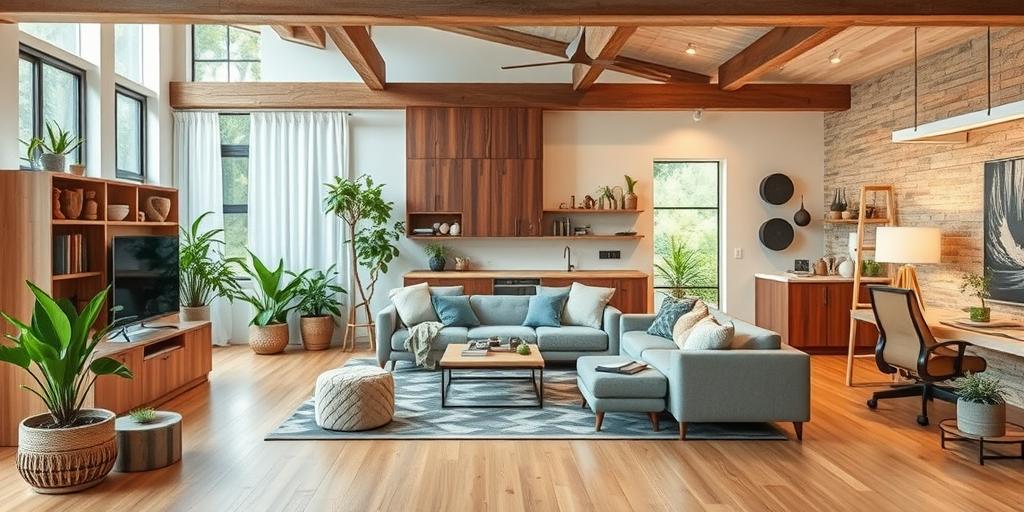DIY Home Improvement Trends for 2025
The home improvement landscape is constantly evolving, driven by technological advancements, sustainability concerns, and shifting lifestyle preferences. As we look ahead to 2025, several key trends are set to dominate the DIY scene. This article provides an informative overview of what to expect, empowering you to plan your next home project with foresight.
1. Smart Home Integration
Smart home technology is no longer a luxury but a standard expectation for many homeowners. In 2025, expect even greater integration of smart devices into DIY projects. This includes:
- Smart Lighting: Install lighting systems controlled via smartphone or voice command, offering energy efficiency and customized ambiance.
- Smart Thermostats: Upgrade to smart thermostats for automated temperature control and energy savings.
- Smart Security Systems: Incorporate DIY-friendly security solutions like smart doorbells, cameras, and alarm systems.
Integrating these technologies will not only enhance convenience but also increase your home’s overall value.
2. Sustainable and Eco-Friendly Materials
Sustainability continues to be a major driver in home improvement. DIYers are increasingly seeking eco-friendly materials that reduce their environmental footprint. Key trends include:
- Reclaimed Wood: Utilize reclaimed wood for flooring, accent walls, and furniture, adding character while minimizing waste.
- Recycled Materials: Opt for recycled glass countertops, recycled plastic decking, and other innovative materials.
- Low-VOC Paints: Choose paints with low or zero volatile organic compounds (VOCs) to improve indoor air quality.
By prioritizing sustainable materials, you can create a healthier and more environmentally responsible home.
3. Multifunctional Spaces
The demand for flexible living spaces is on the rise, especially with more people working from home. DIY projects that create multifunctional areas will be highly sought after:
- Home Office Conversions: Transform spare rooms or unused corners into functional home offices.
- Convertible Furniture: Incorporate furniture that can serve multiple purposes, such as sofa beds, storage ottomans, and folding desks.
- Open-Concept Living: Modify layouts to create open-concept spaces that seamlessly blend living, dining, and kitchen areas.
These DIY efforts maximize space utilization and cater to evolving lifestyle needs.
4. Biophilic Design
Biophilic design, which focuses on connecting indoor environments with nature, will gain further momentum. Incorporate natural elements into your DIY projects:
- Indoor Plants: Add a variety of indoor plants to improve air quality and create a calming atmosphere.
- Natural Light: Maximize natural light by installing larger windows or skylights.
- Water Features: Introduce small water features like indoor fountains to bring a sense of tranquility.
Integrating biophilic elements can enhance your home’s aesthetic appeal and promote well-being.
5. Energy Efficiency Upgrades
With rising energy costs, DIY projects focused on energy efficiency will be a priority. Consider these upgrades:
- Insulation: Improve insulation in walls, attics, and basements to reduce energy loss.
- Energy-Efficient Windows: Replace old windows with energy-efficient models to minimize drafts.
- Solar Panels: Install solar panels for renewable energy generation and long-term cost savings.
Investing in energy-efficient upgrades will lower utility bills and increase your home’s sustainability.
Conclusion
As we approach 2025, DIY home improvement trends are increasingly focused on smart technology, sustainability, multifunctional spaces, biophilic design, and energy efficiency. By staying informed and incorporating these trends into your projects, you can create a modern, comfortable, and valuable home that meets your evolving needs.
